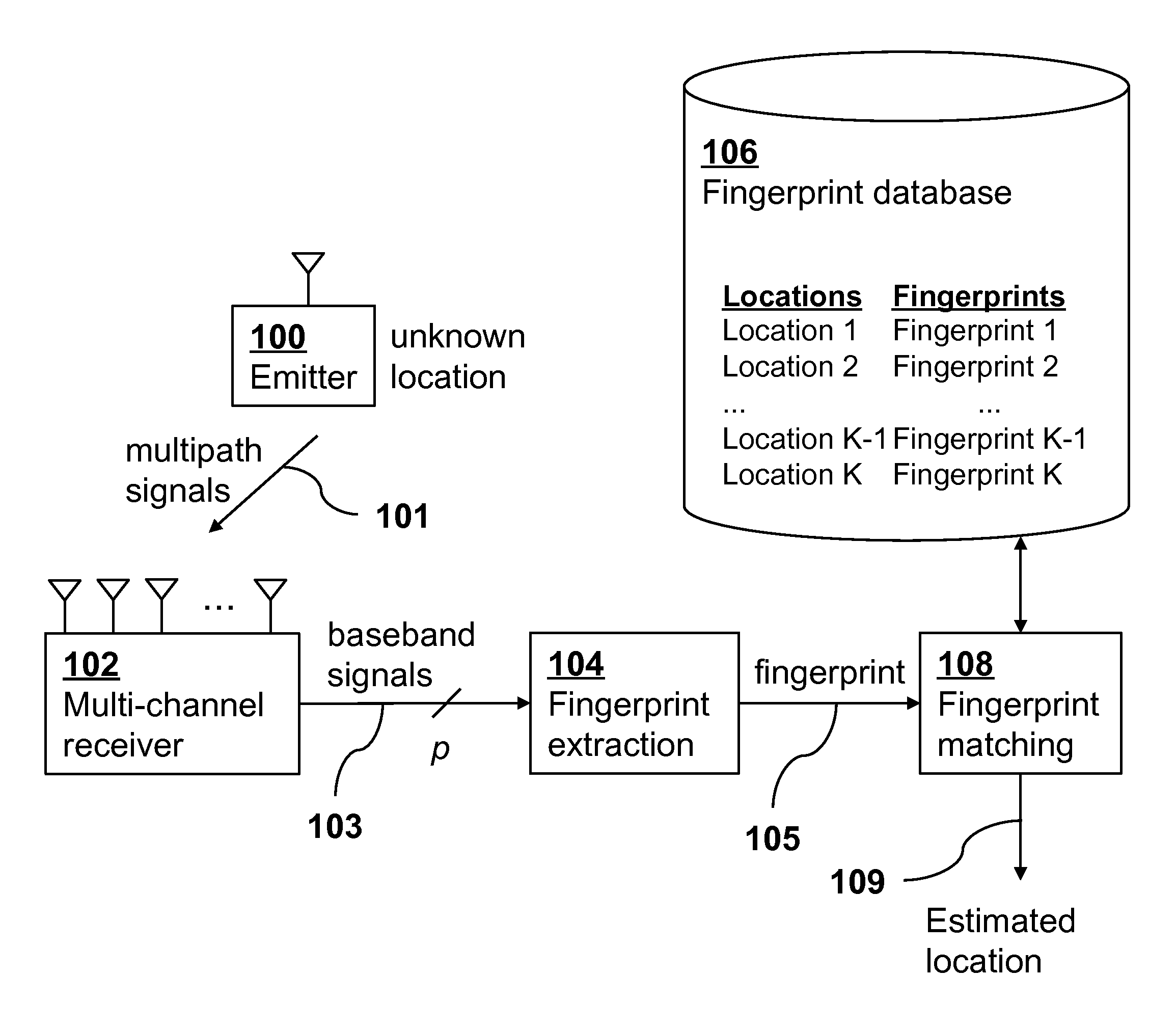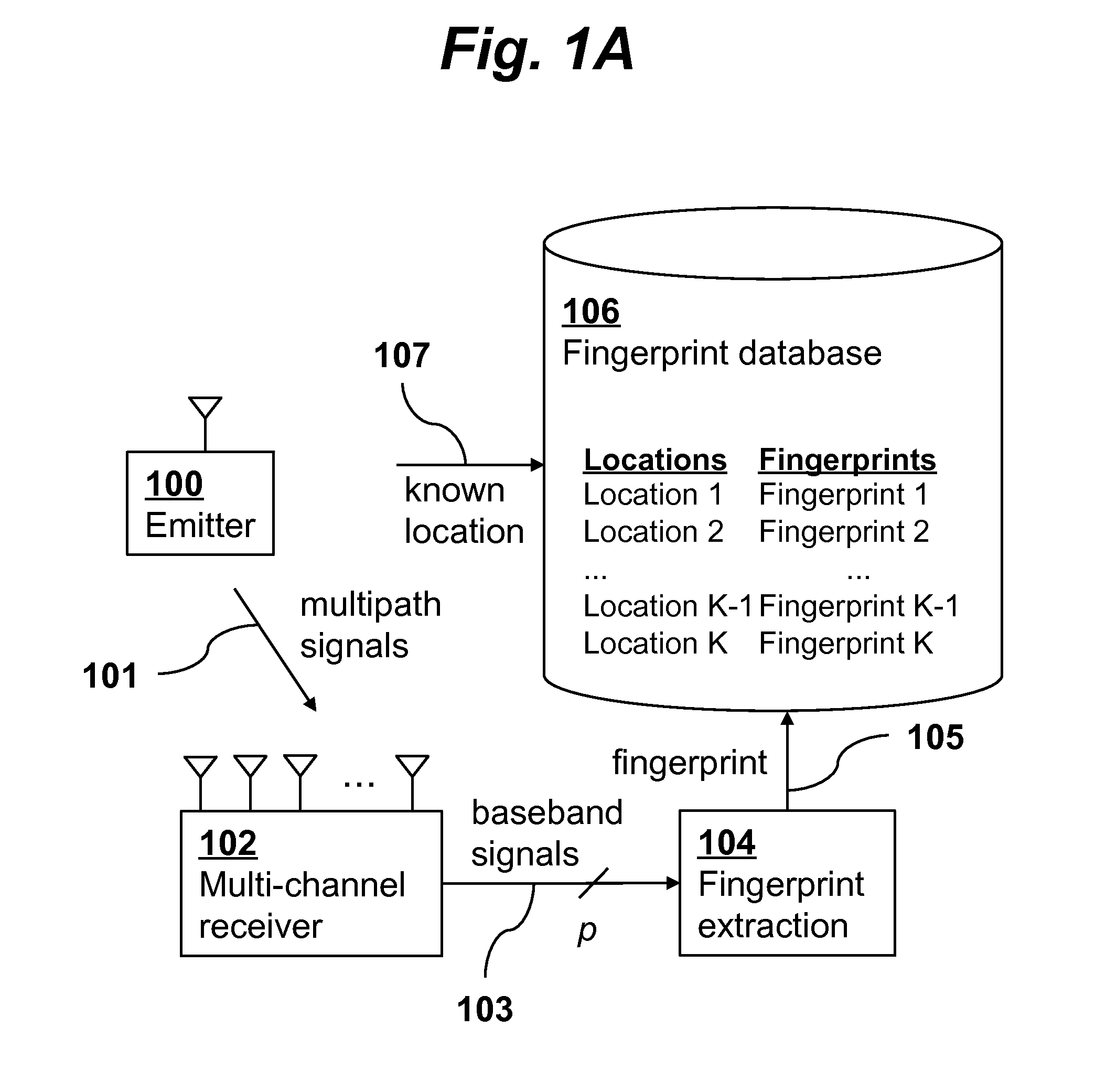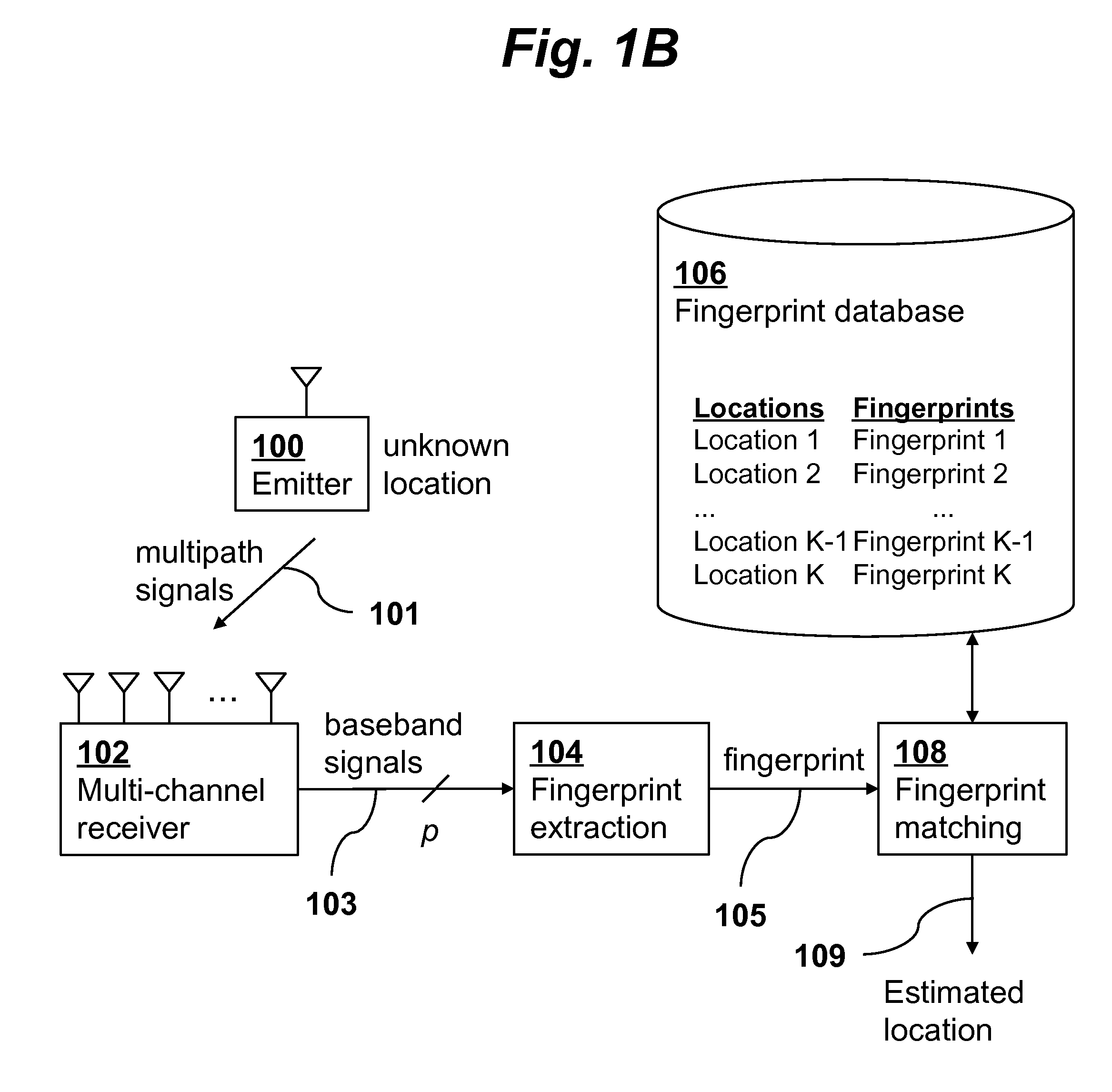Single-site localization via multipath fingerprinting
a fingerprinting and single-site technology, applied in the field of single-site localization via multi-path fingerprinting, can solve the problems of low accuracy of this technique, high signal strength variability, invalid classical position location techniques, etc., and achieve the effect of improving the estimated location of the wireless transmitter
- Summary
- Abstract
- Description
- Claims
- Application Information
AI Technical Summary
Benefits of technology
Problems solved by technology
Method used
Image
Examples
Embodiment Construction
[0018]A general view of a localization technique according to an embodiment of the invention is presented in FIGS. 1A and 1B. The technique includes two phases: an off-line phase, shown in FIG. 1A, and an on-line phase, shown in FIG. 1B. During the off-line phase, fingerprints 105 are collected from one or more emitters 100 at various known locations 107 in the desired geographic coverage area. Signals 101 transmitted from the emitter 100 at a known location propagate through the environment, possibly experiencing severe multipath, and are received by an antenna array and processed by a multi-channel receiver 102 of a BS. After down-conversion to baseband signals 103 by the receiver 102, the received signals are processed by a fingerprint extraction module 104 of the BS which produces the fingerprint 105 from characteristics of the signal. The fingerprint is then stored in a fingerprint database 106 of the BS together with the corresponding known location 107 of the emitter 100. The...
PUM
 Login to View More
Login to View More Abstract
Description
Claims
Application Information
 Login to View More
Login to View More - R&D
- Intellectual Property
- Life Sciences
- Materials
- Tech Scout
- Unparalleled Data Quality
- Higher Quality Content
- 60% Fewer Hallucinations
Browse by: Latest US Patents, China's latest patents, Technical Efficacy Thesaurus, Application Domain, Technology Topic, Popular Technical Reports.
© 2025 PatSnap. All rights reserved.Legal|Privacy policy|Modern Slavery Act Transparency Statement|Sitemap|About US| Contact US: help@patsnap.com



